VIDEOS ON FREE SPARRING
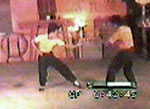
Senior Students of Sifu Wong engaged in free sparring in the 1980s
Many people have the mis-conception that free sparring is absent in kungfu. In fact, free sparring, known as “san da” in Chinese, which literally means “miscellaneous fighting”, i.e. fighting without following a pre-arranged set of patterns, was a very important aspect of kungfu training in the past.
But unlike present day practitioners who regard free sparring as the main way, sometimes the only way, to train combat application, in genuine, traditional kungfu, free sparring has never been used to teach fighting — it is used to test or confirm whether the practitioners can fight. Hence, it comes at the end, not at the beginning, of a long process of combat training. This category shows many video clips where Shaolin Wahnam members free spar using typical kungfu patterns. None of the movements have been pre-arranged.
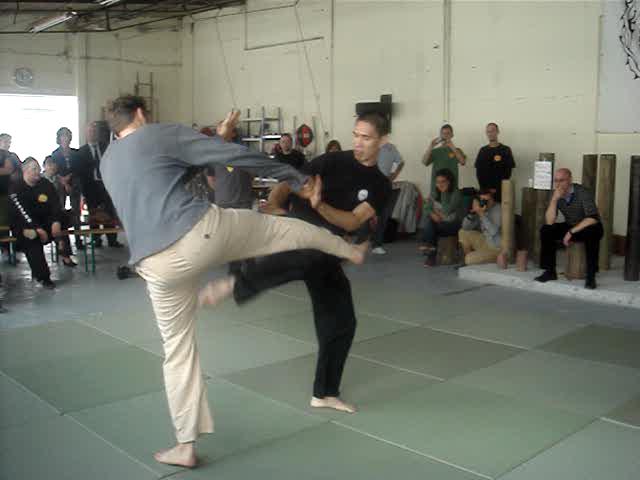 Shaolin Wahnam International Free Sparring Competition 2010
Shaolin Wahnam International Free Sparring Competition 2010
Drawing inspiration from the lei tai of the past the annual free sparring competitions at the Shaolin Temple to select the best ten disciples, the Warrior Project Committee of our school organized the First Shaolin Wahnam International Free Sparring Competition on 13th September 2010 at Frankfurt, Germany.
Click here to enter.
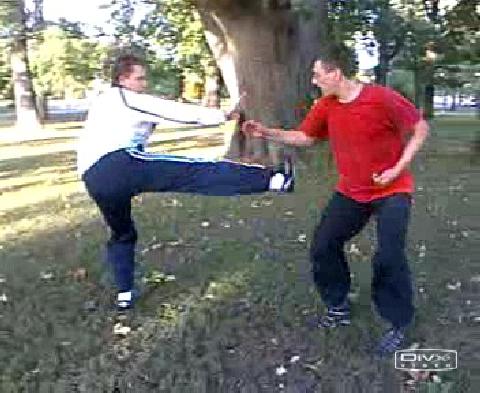 Free Sparring in Finland using Kungfu Patterns
Free Sparring in Finland using Kungfu Patterns
All kungfu styles in the past had their own sparring methodologies, but for various reasons most schools today have lost theirs. This is a fact, otherwise they would be using kungfu patterns for sparring instead of Kick-Boxing. Records both in pictures and in writing of how kungfu practitioners of various styles in the past used kungfu patterns to fight are still extant today. The video clips here show how we use our sparring methodology to prepare participants at the Finland Regional Shaolin Kungfu Course for free sparring after just three days of training.
Click here to enter.
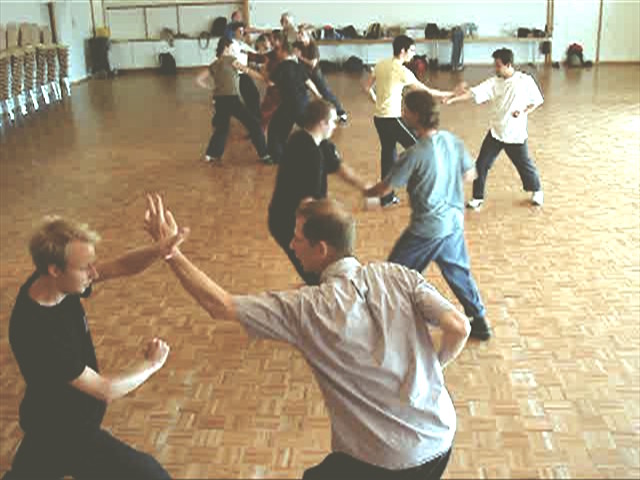 Would you believe one could learn to use kungfu skills and techniques in free sparring in just three days?
Would you believe one could learn to use kungfu skills and techniques in free sparring in just three days?
It is understandable if you don't believe this is possible, but participants including fresh beginners at the regional Shaolin Kungfu courses conducted by Grandmaster Wong Kiew Kit at Switzerland, Andorra and Finland did that in August and September 2006. The explanations and series of video clips here may give you some indications if you also wish to use kungfu for sparring.
Click here to enter.
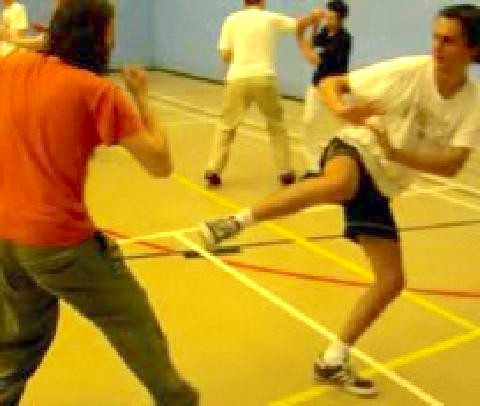 Free Sparring Galore
Free Sparring Galore
Participants at the UK Summer Camp Shaolin Kungfu Course 2006 could effectively use kungfu techniques to spar after undergoing the course for only four days! They were not tired or panting for breath and they did not sustain any injury at all, indicating that they have been successful in practicing Shaolin Kungfu as an internal martial art.
More significantly, instead of attempting to hurt or outdo their opponents, they helped them, as well as had much fun, indicating that they have been successful in practicing Shaolin Kungfu for spiritual cultivation, enabling them to be considerate even to opponents, and be calm and relaxed even in demanding situations.
Click here to enter
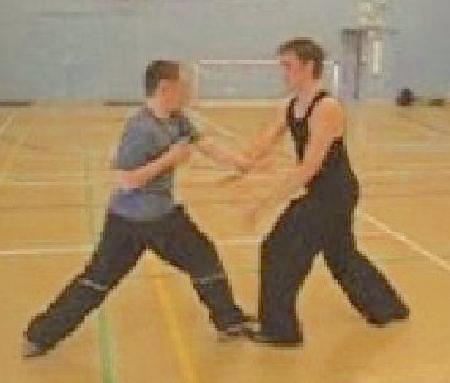 Free Sparring in Taijiquan
Free Sparring in Taijiquan
How many Taiji practitioners with more than four, or ten or twenty, years of experience you know who can have achieved the following, which are fundamental (meaning very important) skills in Taijiquan?
Enter Tao.
Generate an energy flow.
Develop internal force.
Flow with an opponent's momentum and turn it back on him.
Use Taijquan patterns for sparring.
Be relaxed and calm yet powerful and fast in combat.
Spar for more than an hour without feeling tired or out of breath — and without sustaining any injury.
Yet, you have learnt and achieved all of the above in just four days!
Click here to enter.
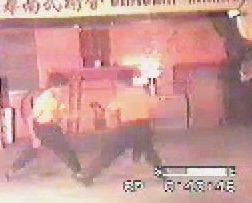 Free Sparring in Shaolin Wahnam more than 20 years ago
Free Sparring in Shaolin Wahnam more than 20 years ago
Free sparring is an essential aspect in kungfu training. It is never meant to teach students how to fight, but to confirm or test whether they can fight. The free sparring shown in this video clip was between Lek Poh and Kok San, two of Grandmaster Wong's students in Malaysia. The video was taken more than 20 years ago. None of the movements were pre-arranged. Notice that the patterns used by Shaolin Wahnam students now in sparring are similar to what were used more than 20 years ago.
Click here to enter.
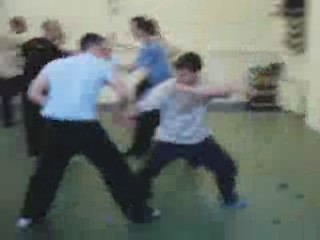 Recent Free Sparring at Shaolin Wahnam UK
Recent Free Sparring at Shaolin Wahnam UK
Free sparring practice by students at Shaolin Wahanm UK. The two in the foreground are Tim (left) and Gary (right). The combatants attack with only hand strikes because they have not been sufficiently trained yet to use kicks, throws and grips. A basic tenet in Shaolin Wahnam is that in combat, apply what you have been well trained.
All the students shown here have trained for about 10 months, and the techniques they use in the free sparring, where none of the movements are pre-arranged, are derived form our Shaolin Wahnam Combat Sequences 1-8. Their sparring is similar because they are at a similar level of development. As they progress they will have individual differences or preferences in their sparring as they widen or deepen their skills and techniques. Later we can see how this progression takes place as Emiko and Michael select techiques from their specialized kungfu sets for sparring.
Click here to enter.
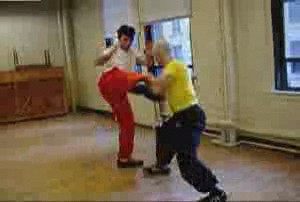 Free Sparring between Eugene and Anthony
Free Sparring between Eugene and Anthony
This video clip, taken soon after they returned from the Special Shaolin Kungfu Course in Malaysia in 2002, shows Eugene and Anthony practice free sparring. None of the movements are pre-arranged. They can use typical kungfu techniques spontaneously because they have been systematically trained to do so.
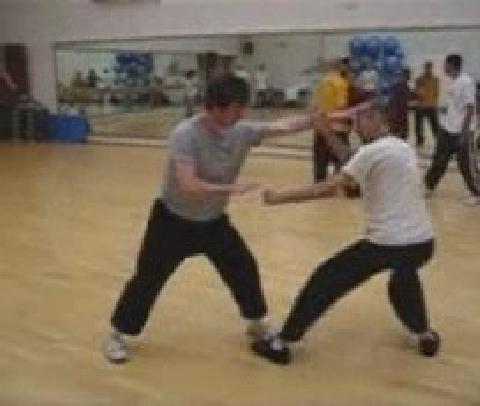 Free Sparring at Canterbury Shaolin Kungfu Course 2005
Free Sparring at Canterbury Shaolin Kungfu Course 2005
Free sparring today, unfortunately, is quite brutal and aggressive, routinely resulting in the practitioners being injured. This is an irony because the very aim of practicing a martial art is to learn how to prevent oneself from being injured in combat, and free sparring is a standard mean to test how effectively he has practiced the martial art.
It is heartening to note that after four days of Shaolin Kungfu training at the England Summer Camp in July 2005, the participants could use typical Shaolin kungfu techniques for free sparring, and no one was injured.
LINKS
